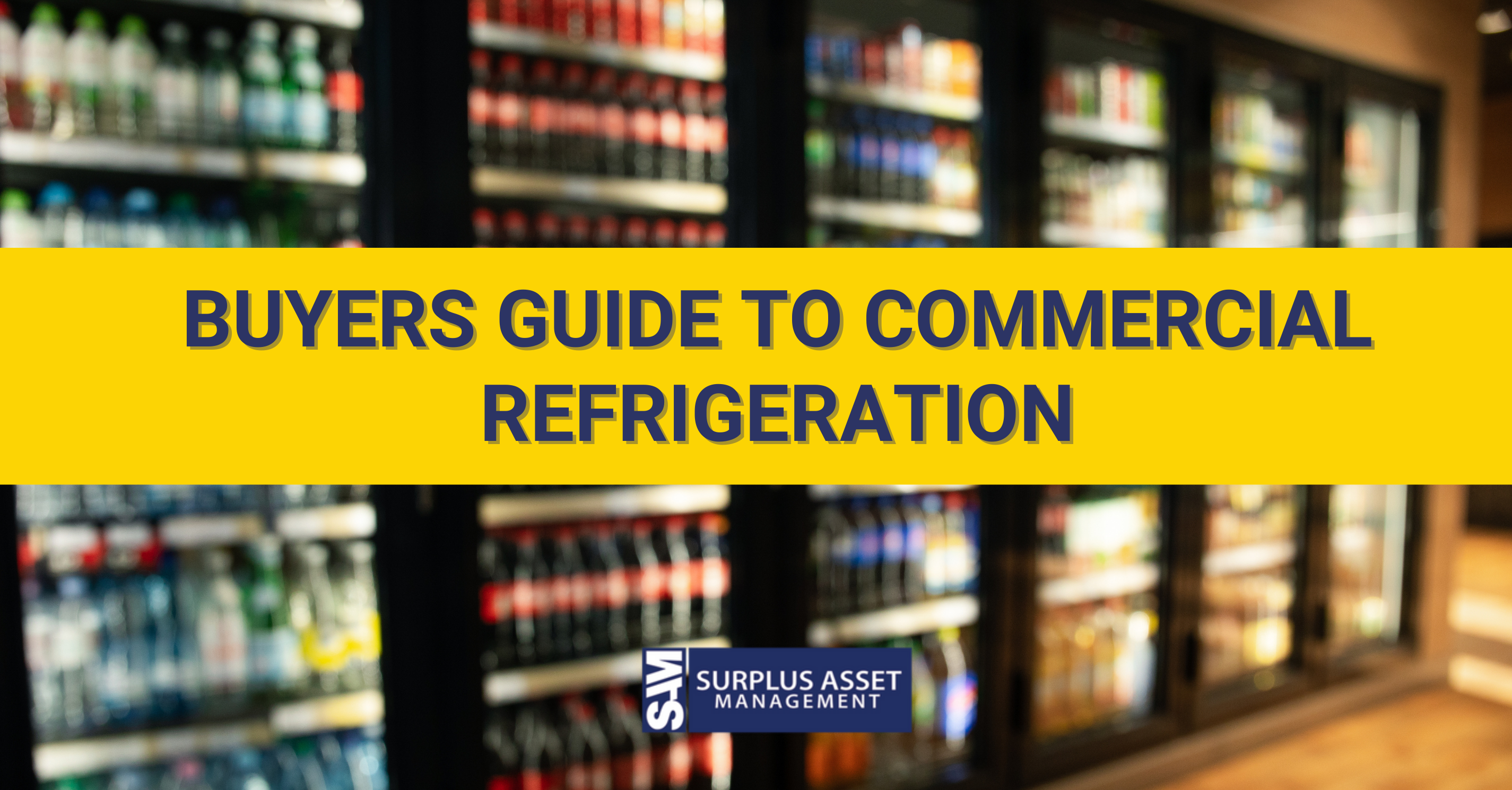Choosing the right commercial refrigeration equipment is a multifaceted process that requires careful consideration of your specific needs, energy efficiency, build quality, and budget constraints. Although existing safety and efficacy guidelines provide a framework for these systems, there are still some other key factors to look out for. In this blog, will will explore those standards, today's options, and what to look for when choosing a company to buy from.
Commercial Refrigeration Standards
We have come a long way since the refrigeration systems were first made. However, when choosing a commercial refrigeration system, there are still some ideas to keep in mind.
Refrigerators and freezers are now covered by NSF/ANSI 7-2023 – the standard for refrigeration materials used to store or display cold food. These include:
- Storage refrigerators
- Storage freezers
- Rapid pull-down refrigerators and freezers
- Refrigerated food transport cabinets
- Refrigerated buffet units
- Refrigerated food preparation units
- Display refrigerators
- Beverage coolers
- Ice cream cabinets
The NSF/ANSI 7-2023 standard sets strict rules for the materials, design, and performance of these systems. It ensures that refrigerators and freezers keep our food safe by resisting contamination and wear from various substances they might encounter. However, it does not establish equipment installation requirements.
What Types of Commercial Refrigeration Systems Are There?
When determining which commercial refrigeration system you should purchase, you should first identify the needs of the business such as how much storage you need, the type of refrigeration system, your budget, energy efficiency, and what features you are looking for.
There are many different reasons for using a commercial refrigeration system, whether it be for supermarkets, convenience stores, shops, or the food service areas of restaurants or a hotel. According to the UNEP Ozone Secretariat, these can typically be broken down into three sub-sectors of systems:
1. Stand-alone factory-sealed equipment: Compact systems employing technology similar to household refrigerators.
2. Condensing units: "split systems" featuring a cooling evaporator situated in the refrigerated area (such as a retail display), linked to a compressor and condenser located remotely.
3. Centralized systems: Expansive distributed systems with multiple cooling evaporators connected to a compressor pack and an external condenser located remotely.
Depending on which unit you are in need of, there are different factors to look out for. Commercial refrigeration systems are designed to operate at two distinct temperature levels: medium temperature (MT) and low temperature (LT). The medium temperature is maintained for chilled products, ranging between 32°F and higher while the low temperature is dedicated to frozen products with temperatures held between 0°F and lower.
The prevalent system design for almost all commercial refrigeration involves the use of direct expansion vapor compression refrigeration cycles, primarily employing single-stage compression in current hydrofluorocarbon (HFC) systems. In this typical setup, each refrigeration system is specifically dedicated to either medium or low-temperature requirements.
Stand-alone systems are designed to cater to a singular cooling load, such as a lone food display case. Condensing units, on the other hand, have the capacity to serve up to three loads, providing flexibility for various cooling requirements. Centralized systems, the most extensive in scope, have the capability to serve numerous food display cases and cold storage rooms, ensuring efficient and comprehensive refrigeration across a commercial space.
When making a decision, you will have to make sure whichever commercial refrigeration unit you choose to go with meets the needs best fit for your business. You will also have to make sure it is within your business's budget and is environmentally safe.
What Qualities Should I Look for in my Commercial Equipment?
With each type of commercial equipment, there are also some key types of safety and quality features to keep in mind, especially when it comes to flammability.
For example, for stand-alone commercial equipment, the is a wide use of hydrocarbons (HC) in the market sub-sector. Some safety codes in the U.S. may limit the charge size for those HCs. The US EPA’s SNAP program has a list of fully acceptable additional HCs. Choosing a system with unapproved HCs may lead to high flammability.
Condensing units are often too large for HCs, so you will have to make sure if this is the type of unit you are buying, that it has a low-flammability alternative. For centralized systems, there are also several non-flammable alternatives.
When choosing a commercial refrigeration system, you will want to also make sure it complies with NSF safety standards, such as for the storage, display, and interior. For additional safety, you will also have to make sure the system keeps the food inside at the correct temperature and can be easily maintained.
What is the Impact of Commercial Refrigeration on the Environment?
The use of commercial refrigeration market is important for many reasons today. However, it is important not to forget about its environmental impact.
In 2019, the International Institute of Refrigeration estimated that there are around 5 billion refrigeration, air-conditioning, and heat pump systems operating worldwide. The global annual sales for these systems reach approximately 500 billion USD.
The refrigeration sector is a significant employer, providing jobs for over 15 million people globally, while also consuming about 20% of the world's total electricity. Statistical data presented exhibits the critical importance of the refrigeration sector, and its significance is anticipated to grow in the coming years due to escalating cooling demands in various sectors and the ongoing challenge of global warming.
The IRR also explains:
- The global electricity demand for refrigeration could more than double by 2050
- They predict that electricity needs for space air-conditioning will triple by 2050
- Ongoing efforts to enhance the energy efficiency of refrigeration equipment could potentially limit the increase in energy consumption.
The commercial refrigeration industry still remains essential to the food, chemical, plastic, steel, and construction industries, as well as for more advanced industries such as electronic data processing and biotechnologies. Additionally, increasing electricity consumption for refrigeration and air conditioning has been observed in both developed and developing countries. This industry is expected to play an increasingly prominent role in diverse fields such as food, health, energy, and the environment. Luckily, there are many systems today that are trying to become increasingly eco-friendly. When choosing where to buy your commercial refrigeration system, it may be important to look for someone with those qualities in mind.
Commercial Equipment Offered at SAM Marketplace
At SAM Marketplace, we offer an extensive range of options including worktop refrigerators, under-counter refrigerators, glass coolers, freezers, keggerators, indoor ice merchandisers, and more. There are both solid and glass door options from reliable brands.
At SAM Marketplace, Quality is a priority. We ensure our buyers receive top-quality, reliable machinery with our top-notch quality control and transparent documentation.
Because of SAM Marketplace’s commitment to environmentally friendly choices, there are also many eco-friendly equipment options. You will be able to find options that are energy-efficient and heavy-duty. You will be able to find cabinet structures that are foamed-in-place using high-density, polyurethane insulation with zero ozone depletion potential (ODP) and zero global warming potential (GWP).
We offer an extensive range of options and work with major supermarkets, retailers, and more. Whether a restaurant, grocery store, convenience store, or brewery – there are many options for you to choose from at a variety of price ranges.
At SAM Marketplace, we can offer the best deal and help you guide your decision. Check out our refrigeration category HERE!
Don’t forget, a 10% discount will be applied at checkout through February 2024.

